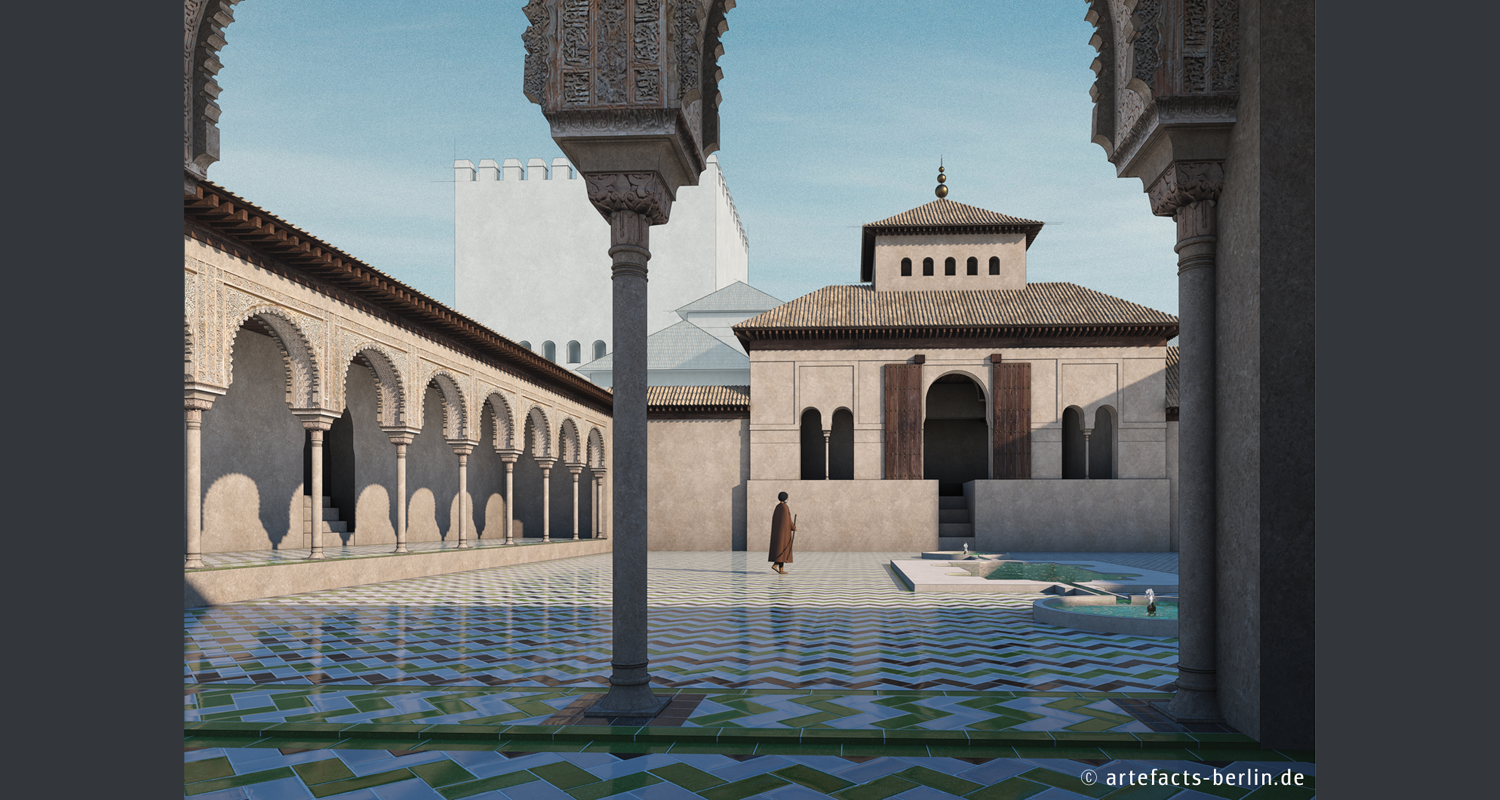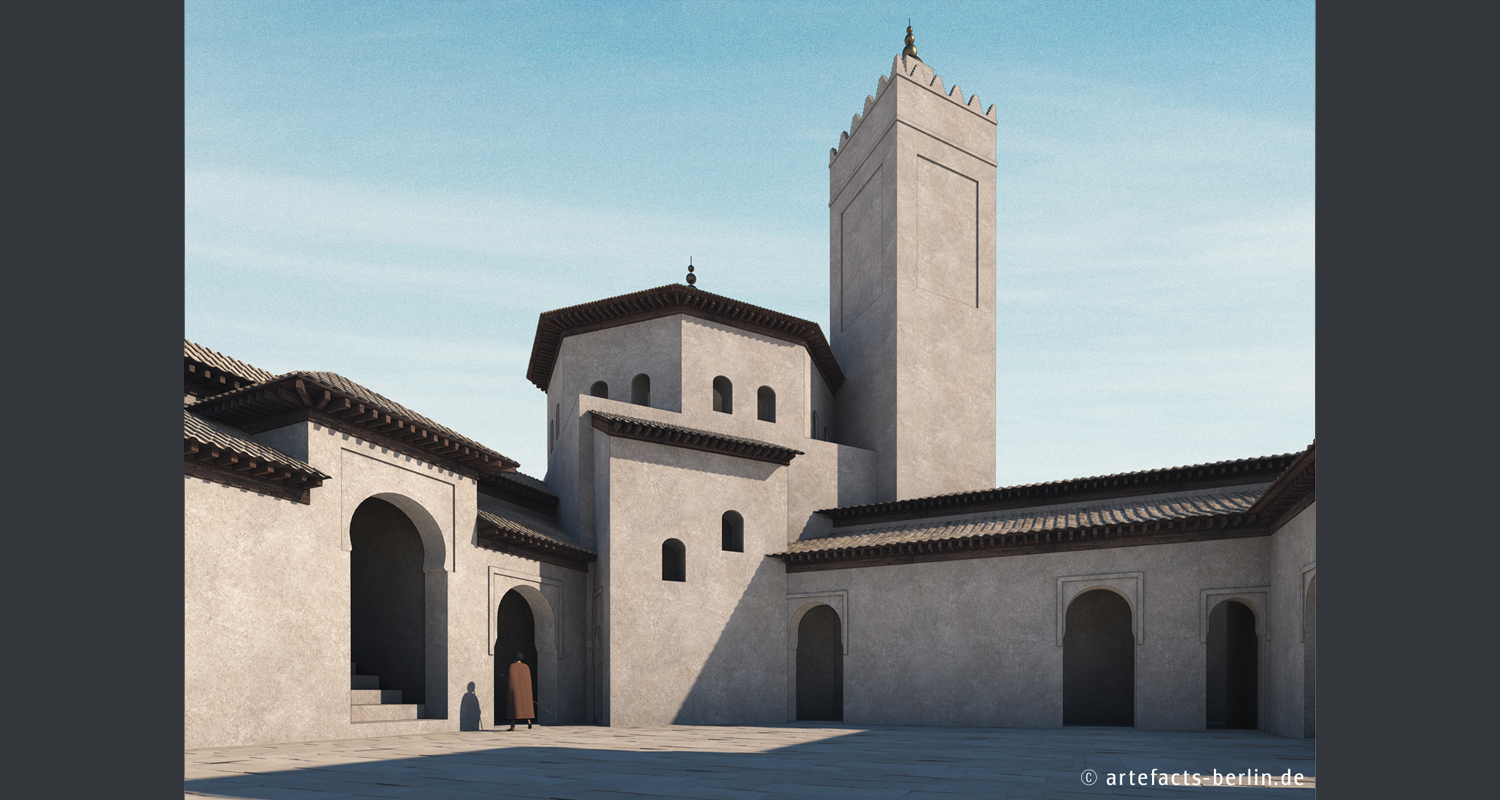About the project
The Alhambra, a palace and fortress complex located on the Sabikah hill in Granada/Spain dating from the 13th to 15th century CE, has been a World Heritage Site since 1984. The complex, with a remarkable size of 740 x 220 m is considered to be one of the most important examples of the Moorish style of Islamic art. In the entrance area of the Nasrid Palace, the foundations of two inner courtyards with a mosque, colonnades and fountains have been preserved. They once formed the entrance area to the palace complex and were used by the Sultan for audiences, court sessions and ceremonial events.
The Madrid department of the German Archaeological Institute documented the preserved architecture comprehensively and in detail since 2021. According to Felix Arnold, the structural remains provide information about the staging of power of an Islamic ruler in the 14th-century CE and allow a comparison with palaces built at the same time in Seville and Cairo.
We were tasked with visualising a reconstruction of both courtyards, with a particular focus on the glazed floor tiles and fountains in courtyard 2 as well as a view of the mosque in courtyard 1. Since the reconstruction of parts of the surrounding architecture is preliminary, we used construction lines and transparency in our visualisation. Both views suggest an eye-level perspective to provide an impression of the architecture’s visual impact on a visitor.
More information about the DAI project can be found at:
https://www.dainst.org/projekt/-/project-display/4807004
Literature
- Arnold, F. (2024) „The Patio de Machuca in the Alhambra: Documentation of the entrance area to the Nasrid Palace“, Madrider Mitteilungen, 64, S. 490–556. doi: 10.34780/edf0-f9mw.


